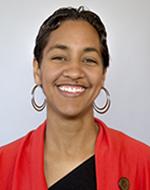By Tony Rodriguez
Medical Bag, January 29, 2019 —
The history of racial tensions in the United States is no secret. Even today, racism is still embedded in all US institutions, including medicine.
In a commentary published in Obstetrics and Gynecology, Ashish Premkumar, MD, of the Department of Obstetrics and Gynecology at the Feinberg School of Medicine at Northwestern University in Chicago, and colleagues, described issues pertaining to race and racism that affect clinicians in the healthcare workforce.1 Although their paper focused specifically on professionals in obstetrics and gynecology — the specialty with the largest proportion of underrepresented providers — the issues covered are relevant to healthcare institutions in general.
Dr Premukumar and colleauges noted that race is not a biological category, but rather a social construct based on assumptions about innate differences among various populations, in which certain groups are considered inferior.
Race is “created by a confluence of societal variables writ into the perceived differences of skin tone or geographic origin,” and it “has a political relationship with ‘whiteness’ — cultivated through historical institutions, economics, law, and social practices — that ultimately restricts” the status of non-white subjects, the authors wrote.1
“This statement is not to suggest that racism is perpetrated only by white individuals, but that the expression of racism in America entails an understanding of what it means to be white, particularly the relationship among skin color, state power, religion, and gender.”

Racism is embedded in all US institutions, including medicine — so what steps are being taken to improve the well-being of the healthcare workforce?
Based on 2015 statistics of medical school graduates, an estimated 6% identified as black or African American, and 5% identified as Latina, Latino, or Hispanic.2 These groups each represent only 4% of active physicians and have previously reported high rates of discrimination in their medical careers.1 Such experiences have been linked with lower career satisfaction, higher job turnover, feelings of being unwelcome within their institutions, and contemplation of leaving the medical profession.

Dr. Ashish Premkumar, MD, Feinberg School of Medicine Northwestern University
Although discrimination or harassment has been reported by nearly 60% of trainees in medicine, trainees of color are unlikely to feel comfortable speaking up in these situations. Fewer than 20% of students who experienced such incidents reported them to their Office of Minority Affairs.1
The paper detailed several key areas in which race and racism affect clinicians in the workplace, such as relationships with patients and lack of support from colleagues and supervisors. Clinicians of color have reported discriminatory experiences with patients, including refusal to receive treatment from a black female doctor, and a black intern being told that she was “really smart for a black person.”1

Dr. Sara Whetstone, MD, MHS, University of California, San Francisco School of Medicine
When such incidents occur, people not of color often remain silent and fail to take action on behalf of the clinician experiencing racism. This lack of validation and support further compounds the difficulties facing these clinicians and can increase “racial fatigue,” a term used to describe the “emotional and psychologic consequences minority physicians experience in addressing the enduring issues of race and racism.”1
The authors added that people not of color who do not currently have the skills to address racism must take responsibility to learn them: “Allyship is no longer a luxury, but a requisite component of working and training in health care,” the authors wrote.
“Fighting racism requires both a philosophical stance that systematic discrimination is wrong and tools that can be used to fight its multifaceted incarnations in everyday life.”
To that end, the authors outlined actions that can be undertaken at various levels. At the institutional level, for instance, policies that explicitly address racial and ethnic discrimination should be created. After a patient’s daughter requested that her father be seen by an “American” doctor instead of the physician of Southeast Asian descent who was treating him at Penn State’s Milton S. Hershey Medical Center, the facility added a statement to their Patient Bill of Rights noting that they will not honor requests to change providers based on race, ethnicity, religion, sexual orientation, or gender identity.

Dr. Andrea V. Jackson, MD, MAS, University of California, San Francisco School of Medicine
For further discussion about race-related issues in the healthcare workforce and how they may be properly addressed, Medical Bag interviewed the authors of the commentary: Dr Premkumar; Sara Whetstone, MD, MHS, assistant professor of obstetrics, gynecology, and gynecologic surgery at the University of California, San Francisco (UCSF) School of Medicine; and Andrea V. Jackson, MD, MAS, assistant professor of obstetrics, gynecology, and family planning at UCSF.
Drs Premkumar, Whetstone, and Jackson collectively provided the following answers.
Medical Bag: What are some of the broader race-related issues prevalent in the healthcare workforce? Can you talk about some of the specific issues faced by minorities working in medicine?
Drs Premkumar, Whetstone, and Jackson: When thinking about race and racism-related issues in health care, the most obvious issue is lack of racial diversity. This is important for the health of our nation, since it has been shown that providers of color are more likely to care for poor and racial and ethnic minorities, and because lack of diversity leads to feelings of isolation and exclusion that have been voiced by physicians from racial and ethnic minority backgrounds.3
The large issues facing our healthcare workforce really have to do with the problems of microaggressions on the part of providers to patients, patients to providers, and between providers. Furthermore, there is a significant lack of workforce diversity, particularly in terms of the overall number of minority physicians, as well as among specific academic appointments, such as professors and deans. It’s hard to distill these problems into easily-digestible facets, especially when practicing medicine and creating health policy in a vastly unequal society. It is crucial to remember that discrimination occurs along multiple intersecting identities – racial, gender, economic, sexual – and can have an impact not only on the quality of care, but also on the ability of physicians to complete training or to continue in practice, particularly in an academic setting.
Medical Bag: What are some examples of key changes that need to be made in this regard on an institutional level?
Drs Premkumar, Whetstone, and Jackson: Key changes that need to occur on an institutional level are varied, but definitely include policies that are aimed at zero tolerance of discriminatory behavior on the part of patients for particular providers — such as the example that we discussed in our paper regarding the developments at Penn Health. Additionally, it is essential to have a continued and genuine commitment to diversity of staff, learners, and providers. Institutions with such a commitment will need to actively work to achieve inclusion and equity for all. This approach would benefit from a data-driven strategy much like other quality improvement metrics. Thus care institutions should strive to collect data on measures like burnout, engagement, satisfaction, and experiences of exclusion and discrimination.
We also need a systematic culture shift within care teams that allows for a safe acknowledgment and process of rectification for victims of discrimination, particularly when it is between provider and provider. Some institutions have begun piloting reporting systems for microaggressions and discrimination; one example is the UCSF reporting system for medical students — Supporting A Fair Environment (SAFE) — which is intended to provide a mechanism for students to report mistreatment against them or observed mistreatment against other students.
Medical Bag: What are some ways that clinicians can advocate for change in this area? How can clinicians who are not racial or ethnic minorities support and advocate for those who are?
Drs Premkumar, Whetstone, and Jackson: As we describe in our paper, calling for an institutional policy that acknowledges a zero tolerance toward discrimination from patients to providers is crucial to creating a just culture within medicine. Second, engaging with local and national practice organizations to call for wider recommendations regarding training on allyship and mitigating microaggressions is crucial. Finally, for those who do not find themselves in the minority for a variety of identities — for example, heterosexual, cisgender, white — it is important to not only acknowledge one’s own limited knowledge in understanding bias but also to work with minority colleagues to understand how best to support them in situations of discrimination.
The current healthcare needs of our country demand interdisciplinary, interprofessional collaboration, which means that learners and providers must learn how to work on diverse teams. It is the obligation of medical education training programs and healthcare institutions to prepare individuals for such work. Just as we train individuals how to respond to medical emergencies and deliver bad news, we must also prepare them to identify and respond to microaggressions and discriminatory acts. This type of training demands active participation; it must go beyond passive lectures to actual practice of team-based responses to microaggressions.
Medical Bag: What are some of the remaining research needs in this area?
Drs Premkumar, Whetstone, and Jackson: There is a variety of research that still needs to be conducted regarding the outcomes of hospital-level policies surrounding discrimination, particularly as they relate to provider support, patient satisfaction, and patient outcomes and quality of care. Second, there is a burgeoning literature in medical education that seeks to understand the impact of training on bias and discrimination in the pregraduate curriculum, and this type of inquiry should extend into residency education and beyond. We also hope that research will expose best practices around responses to microaggression and discrimination in the health care workforce.
Medical Bag: Are there last thoughts you would like to share on this topic?
Drs Premkumar, Whetstone, and Jackson: This issue — the everyday discrimination and racism that so many of our healthcare providers experience — is one that is not going to be fixed overnight. It requires culture change, which can only be achieved if it starts from the top. We implore our leaders of medical and academic centers to take the lead in dismantling these systems of oppression for their learners and employees.
Helping underrepresented learners and providers thrive in medicine is critical to our larger mission of eliminating health inequities in this country. Underrepresented providers disproportionately work in underserved communities and care for underserved individuals; thus, ensuring such providers are included, welcomed, supported, and safe in their work should be an aspiration for all academic medical centers and healthcare institutions.
References
- Premkumar A, Whetstone S, Jackson AV. Beyond silence and inaction: changing the response to experiences of racism in the health care workforce. Obstet Gynecol. 2018;132(4):820-827.
- Association of American Medical Colleges. Diversity in medical education: facts & figures 2016. 2016. Accessed January 25, 2019.
- Hauser C. How Professionals of Color Say They Counter Bias at Work. New York Times. https://www.nytimes.com/2018/12/12/us/racial-bias-work.html. December 12, 2018. Accessed January 25, 2019.










